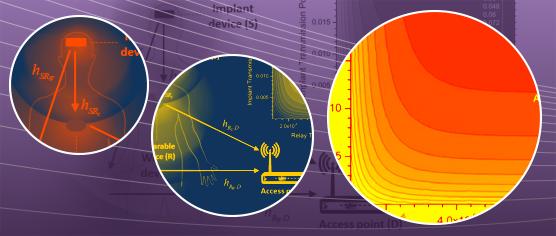Ntouni, G., Lioumpas, A., Nikita, K.

Implant devices and Wireless Body Area Networks (WBANs) are used in many healthcare applications where the continuous monitoring of a human body biological parameter is crucial. Thus, reliability, low‐ power consumption and long‐lifetime are vital characteristics that should be provided by WBANs. Reliable communication implies that the communication link does not suffer from outages and that the quality of service (QoS) is preserved within a desirable range, while maintaining the maximum transmission power below a required level. Low power transmission is important because radio frequency emissions may be harmful for the patients. Thus, the trade‐off between transmission power and QoS is of utmost importance especially for WBANs.
In this paper, a biotelemetry communication scheme is considered, consisting of an implant device and wearable on‐body devices for relaying the information to an off‐body access point. The performance of this scheme is assessed theoretically in terms of the bit error rate and outage probability, taking into account realistic channel models. Exact closed‐form expressions are derived, considering a variety of practical communication scenarios regarding the number and position of the wearable devices and the motion of the human body. These expressions are exploited towards optimizing the trade‐off between energy consumption and performance and providing insight into the design of biotelemetry systems regarding the type of the wearable devices, their location and the required transmission power. Due to the strict power limitations of the implanted device, the utilization of a wearable device is necessary for forwarding the sensed information to an off‐body access point, while the location of the wearable relays on the human body plays a crucial role for the provided QoS and the power consumption of the implant device. In this way, the complexity and power consumption are transferred from the implant device to the on‐body relay, which is an efficient approach since the latter can be easily replaced, in contrast to the in‐body implant.
Tags: Biomedical implants, IEEE P802.15 channel model, power consumption, reliability, wireless body area network (WBAN)
